40 Best Places to Visit in Summer in India
Summer in India is a time when most parts of the country experience rising temperatures, but it also opens the door to some of the...
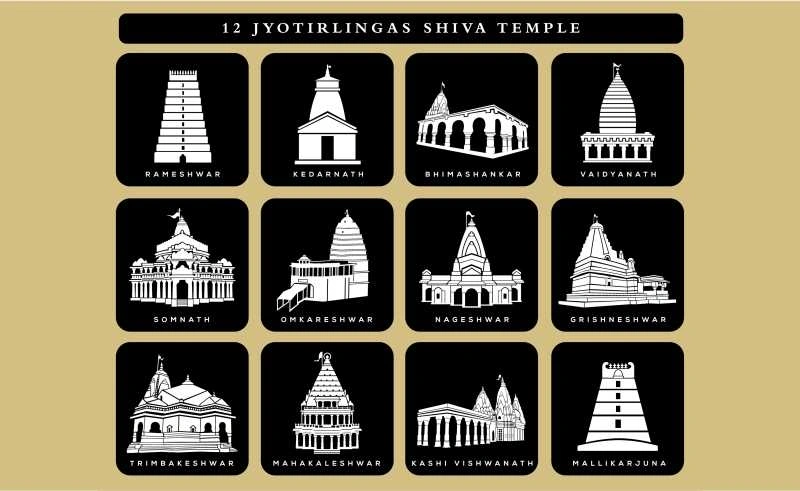
The 12 Jyotirlingas in India are among the most sacred Shiva temples in the country, representing the infinite cosmic power of Lord Shiva. The word Jyotirlinga literally translates to “pillar of light,” signifying Shiva’s endless and formless presence that transcends the physical world. These shrines are not just architectural marvels but spiritual epicenters, mentioned across the Vedas, Puranas, and several ancient scriptures.
According to Hindu mythology, when Lord Brahma and Lord Vishnu once argued about the supremacy of creation, Lord Shiva appeared as an infinite pillar of fire that pierced through the universe, the Jyotirlinga. The spots where the light emerged and manifested on earth became the 12 Jyotirlinga temples we revere today.
Each Mahadev temple in India among these 12 holds immense significance, spiritually, historically, and culturally. Devotees from across the world undertake the Jyotirlinga yatra, visiting each of the 12 famous Shiva temples in India to seek blessings, perform Abhishekam, and experience the divine energy that flows through these sacred places.
Here’s a complete list of the 12 Jyotirlingas with their locations across India.
| S.No. | NAME | LOCATION |
| 1 | Somnath Temple | Gujarat |
| 2 | Mahakaleshwar Temple | Madhya Pradesh |
| 3 | Omkareshwar Temple | Madhya Pradesh |
| 4 | Kedarnath Temple | Uttarakhand |
| 5 | Mallikarjuna Temple | Andhra Pradesh |
| 6 | Bhimashankar Temple | Maharashtra |
| 7 | Trimbakeshwar Temple | Maharashtra |
| 8 | Kashi Vishwanath Temple | Uttar Pradesh |
| 9 | Baidyanath Temple | Jharkhand |
| 10 | Rameshwaram Temple | Tamil Nadu |
| 11 | Nageshwar Temple | Gujarat |
| 12 | Grishneshwar Temple | Maharashtra |
These 12 shrines together form a spiritual circuit connecting North, South, East, and West India, making it the most sacred Jyotirlinga pilgrimage route in Hinduism.
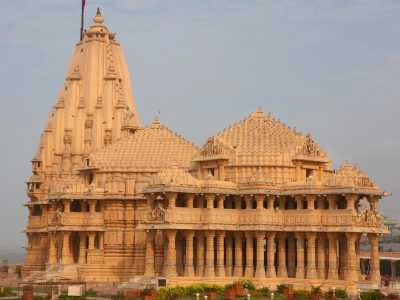
The Somnath Temple is considered the first among the 12 Jyotirlinga temples and stands as an enduring symbol of faith and resilience. Situated on the Arabian Sea’s shores in Gujarat, Somnath has been destroyed and rebuilt multiple times through history, each reconstruction reaffirming its eternal spirit.
According to ancient texts, the Moon God (Chandra Dev) was cursed by his father-in-law Daksha for neglecting his other wives in favor of Rohini. To rid himself of the curse, Chandra worshiped Lord Shiva at Prabhas Patan. Moved by his devotion, Shiva restored his brightness and manifested as a Jyotirlinga at this site.
Somnath represents the cycle of loss and restoration, symbolizing how divine energy transcends destruction and time.
Somnath Temple is open for darshan from 6:00 AM – 9:00 PM

Located in the ancient city of Ujjain, the Mahakaleshwar Jyotirlinga is one of the most powerful Jyotirlingas in India, believed to be self-manifested (Swayambhu).
According to mythology, a demon named Dushana terrorized Ujjain, prompting devotees to call upon Lord Shiva. Emerging in a fierce form as Mahakal, Shiva destroyed the demon and agreed to stay here as the city’s eternal protector.
Mahakaleshwar represents time (Kala) itself, the destroyer and preserver, reminding devotees of Shiva’s dominion over life and death.
Mahakaleshwar Temple is open for darshan from 4:00 AM – 11:00 PM

Situated on the sacred Narmada River, Madhya Pradesh. The island of Omkareshwar is naturally shaped like the holy symbol “Om.”
It is believed that Lord Shiva appeared here to defeat the demon Vindhya, who performed penance for supreme power. Shiva was pleased and granted him blessings, manifesting as the Omkareshwar Jyotirlinga.
Omkareshwar stands for the union of the physical and the spiritual symbolizing the eternal sound of creation, “Om.”
Omkareshwar Temple is open for darshan between 4:30 AM – 9:30 PM
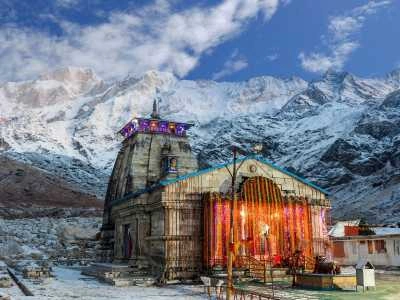
Nestled in the Himalayas near the Mandakini River, Uttarakhand. Kedarnath Temple is one of the most revered 12 Jyotirlinga places and also part of the Char Dham Yatra.
It is said that after the Kurukshetra war, the Pandavas sought Shiva’s forgiveness. The Lord disguised himself as a bull, and when they tried to catch him, he vanished into the earth, leaving his hump visible at Kedarnath.
Kedarnath embodies devotion and redemption, the triumph of faith amidst the harshest terrains.
Kedarnath Temple remains open between May to November from 4:00 AM till 9:00 PM

Located on the Nallamala Hills, Mallikarjuna Temple is among the most important Shiva temples in South India.
According to legend, Shiva and Parvati came here to pacify their son Kartikeya after he moved to these hills in solitude. Shiva stayed here as Mallikarjuna, while Parvati took the form of Bhramaramba Devi.
This Jyotirlinga represents parental love, compassion, and divine unity.
Mallikarjuna Jyotirlinga is open for darshan between 4:30 AM – 10:00 PM

Surrounded by the lush Sahyadri Hills, Bhimashankar Jyotirlinga is a serene Mahadev temple in India.
Shiva is said to have destroyed the demon Tripurasura here to save the gods. After the battle, the sweat from his body formed the Bhima River, which flows nearby.
Bhimashankar signifies the victory of righteousness and courage over arrogance and evil.
Bhimashankar Temple is open for darshan between 4:30 AM – 9:30 PM
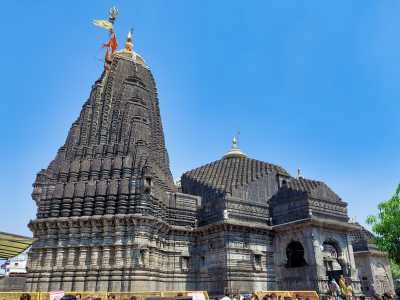
Situated near Nashik, Trimbakeshwar Temple lies at the source of the sacred Godavari River.
Rishi Gautam and his wife Ahilya performed great penance here, and Lord Shiva blessed them by residing as Trimbakeshwar.
This Jyotirlinga is associated with purity and the cleansing of sins through sacred water and prayer.
Trimbakeshwar Temple is open for darshan between 5:00 AM – 9:00 PM.
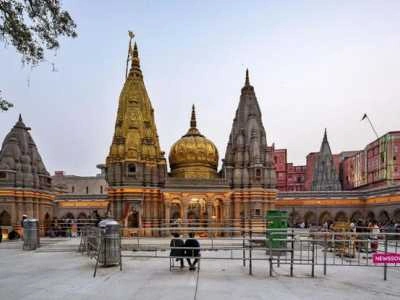
The Kashi Vishwanath Temple is located in Varanasi, Uttar Pradesh. India’s holiest city. It is believed that a single visit here grants moksha (liberation).
According to myth, Varanasi is Shiva’s eternal abode, where he remains as the Lord of the Universe (Vishwanath).
It represents liberation and divine knowledge, the realization of life’s ultimate truth.
Kashi Vishwanath Temple is open for darshan from 3:00 AM – 11:00 PM.

Also known as Vaidyanath Dham, this temple is associated with Lord Shiva’s form as the Divine Healer.
After Ravana’s penance, Lord Shiva granted him the Jyotirlinga under the condition that it should never be placed on the ground. Ravana broke this rule, and the Linga established itself permanently at Deoghar.
Baidyanath symbolizes healing, wellness, and devotion.
Baidyanath Temple is open for darshan between 4:00 AM – 9:00 PM
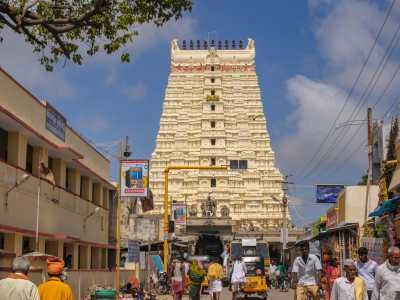
Located on the southern tip of India, Tamil Nadu. Rameshwaram Temple is one of the holiest Jyotirlinga temples and part of the Char Dham.
Lord Rama worshipped Shiva here before crossing the ocean to Lanka, making it a symbol of penance and devotion.
Rameshwaram reflects unity, the meeting of Vishnu (Rama) and Shiva’s divine energies.
Rameshwaram temple is open for darshan between 5:00 AM – 9:00 PM.

Located near Dwarka, Gujarat. Nageshwar Temple is said to protect devotees from all forms of negativity.
The demon Daruka imprisoned Shiva’s devotee Supriya, prompting Shiva to appear as Nageshwar to destroy the demon and free his devotee.
Nageshwar stands for protection, faith, and spiritual strength.
Nageshwar temple is open for darshan between 5:00 AM – 9:00 PM.
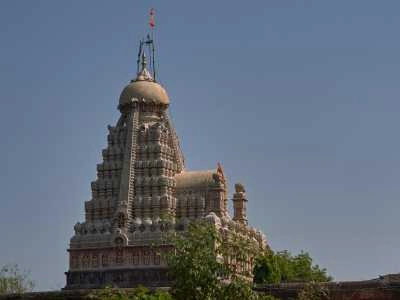
Close to the famous Ellora Caves, Maharashtra. Grishneshwar Temple is the twelfth and last among the 12 Jyotirlinga list.
A devout woman named Kusuma worshipped Shiva daily, immersing the Linga in a tank. When her son was killed by her jealous relatives, Shiva revived him and blessed the site as Grishneshwar Jyotirlinga.
Grishneshwar represents forgiveness, family devotion, and divine grace.
Grishneshwar temple is open for darshan between 5:30 AM – 9:30 PM
The 12 Jyotirlingas in India are not just sacred destinations, they are timeless manifestations of divine light, connecting millions of devotees to the cosmic power of Lord Shiva. Visiting these Jyotirlinga places is believed to cleanse one’s soul, dissolve sins, and lead to spiritual awakening.
Whether you call them Mahadev temples, Shiva shrines, or simply pillars of divine light, these 12 Jyotirlinga name and place combinations are a map of faith that continues to inspire generations of seekers.
Summer in India is a time when most parts of the country experience rising temperatures, but it also opens the door to some of the...
India is a land of incredible diversity, geographically, culturally, and climatically. From the snow-covered Himalayas to sun-kissed beaches, dense jungles, and royal deserts, every region...
South India, comprising Kerala, Tamil Nadu, Karnataka, Andhra Pradesh, Telangana, and the union territories of Puducherry and Lakshadweep, offers a remarkable diversity of landscapes and...
You are one step closer to having the best journey of your lifetime! Talk to us, write to us all that you have envisioned for your India trip, and one of our travel experts will connect with you on priority. To help you explicitly we have WhatsApp and Email addresses!